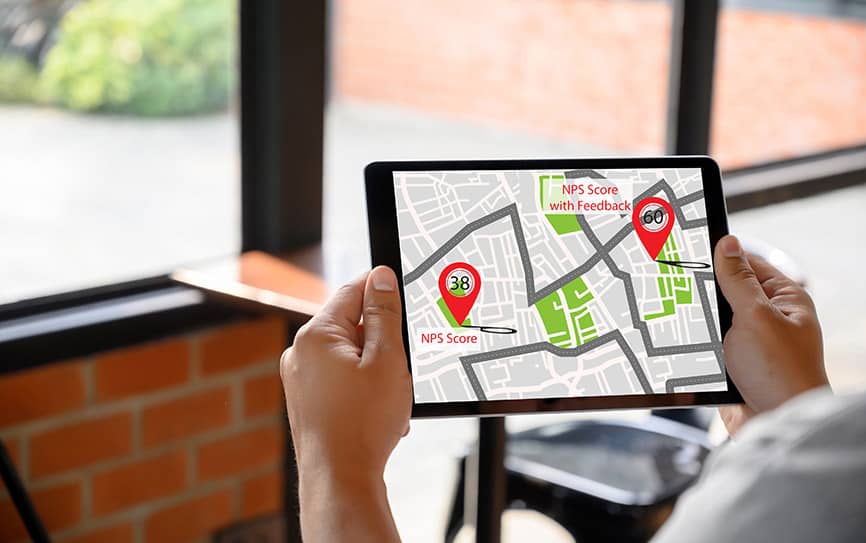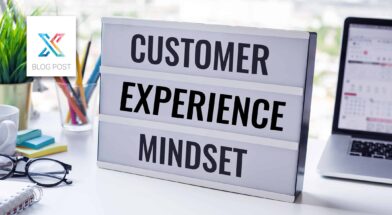The Net Promoter Score (NPS®) measures the willingness of clients to recommend your firm's service to their peers. It is typically used as a proxy for gauging your clients’ overall loyalty to your firm and your brand. Many Client Experience (CX) and Voice of the Client (VoC) programs incorporate NPS.
The founding principles of NPS can be found in The Ultimate Question by Fred Reichheld. Reichheld lays out a methodology in which, ONE QUESTION (the Ultimate Question) provides data highly predictive of future growth and success. Based on extensive and sound research, NPS provides a simple, single metric by which to track your outcomes and progress. The basic question asked is:
How likely are you to refer us to a colleague?
The answer scale ranges from 0-10, "very unlikely" to "very likely." The theory of NPS is anyone responding with a score of 0-6 are "detractors." Detractors will ultimately speak poorly of your firm and services. "Passives" respond with scores of 7 and 8. Passives will likely neither promote nor defame your firm. "Promoters" provide scores of 9 and 10. These individuals are very likely to promote your firm to others.
Your NPS is the difference between promoters and detractors. For example, if you have 52% promoters and 18% detractors, your NPS is 34. In real numbers, these percentages mean if you ask 100 clients the Ultimate Question, 52 of them gave you a score of 9 or 10 (promoter), 18 of them gave you a score between 0 and 6 (detractor), and the rest of them were passives (scores of 7 or 8). When calculating NPS, passives are not counted.
The best corporations in America receive NPS scores consistently in the 75% range (e.g. Apple, USAA, and Google). Others, such as Charter Communications and many other telecoms actually have an NPS in the single digits. Many times the numbers are negative with more detractors than promoters.
Extensive research shows the correlation between revenue, profit, and market-share growth based on NPS. Reichheld suggests the higher your NPS, the more likely your firm is poised for growth and profitability.
Challenge
I agree NPS provides a single, simple metric to show where your firm currently is. However, it lacks the ability to give your firm insights on how (and where) to improve. How to increase your NPS score to drive the promised revenue growth and profitability.
Improve NPS (and financial results) with ongoing feedback
Are you thinking, “Wait a minute, I thought NPS provided feedback?”
If so, you’re right. NPS is a form of feedback. But NPS is a snapshot and is limited to telling you where you are right now (and where you’ve been, once you have history to review). It doesn’t provide direct insight on how to improve your clients’ experience and build loyalty. Think of it this way, NPS is like a street sign – it tells you where you are. Ongoing feedback is like a GPS – it helps you navigate to where you want to go.
To get the most value from asking the Ultimate Question, Client Savvy recommends you go one step further. Ask, “I wonder why the client gave us this score?” Whether your client gave you a 1 (big detractor) or a 10 (top promoter), understanding the WHY is critical.
In a desire to increase profits and drive loyalty, many of the professional services firms look to NPS and ongoing feedback as a way to identify problems to be addressed. While you clearly want to understand why a client gave you anything less than a 9 or 10 (promoter), understanding what your promoters love about doing business with you provides a strong benchmark before you make any service delivery improvements. In either situation, using NPS with ongoing feedback gives your firm the GPS you need to navigate to the positive financial results you desire.
Case Study: Smith and Jones Law Firm CX Baseline1
Here is a case study for a 150-person multi-practice law firm. The CEO of the firm approached our team just over a year ago and asked a lot of probing questions regarding how CX (and EX) could help them accomplish their goals. Their specific goals included increased cross-selling opportunities, higher profitability, more negotiated contracts vs. competitive engagements, transfer of brand loyalty from specific individuals to the firm overall, and increased employee retention.
Client Perception
We recommended they begin with a Client Perception Study. The Client Perception Study is a terrific starting point before implementing ongoing feedback. It provides clients with the chance to tell the firm how they are doing in several key areas and provide them with a baseline NPS Score. What the CEO of Smith and Jones learned (and it is fairly typical) is that their clients were really pleased in some areas and felt there was room for improvement in others. Their NPS Score was 55.
After reviewing their data, Smith & Jones worked with Client Savvy to design and implement a CX strategy with the goal of raising their NPS score. This strategy integrated the positive elements of their service delivery process (based on their clients’ feedback in the perception study) more consistently. They also made modifications to the areas their clients identified as not meeting expectations on a regular basis. At the same time, they worked with us to launch an ongoing client listening program to measure the impact of the changes they made and see trending analysis.
The results:
- The firm leveraged the positive feedback and comments they received on individuals in their different practice areas to reduce internal fear and increase cross-selling opportunities. They now had data to prove that other attorneys were delivering great experiences to their clients as well!
- The firm now had more opportunity for negotiated contracts, which meant higher profitability because the client had more stakeholders involved who wanted to work with this firm specifically. (Consistent delivery experience is key here)
- Net Promoter Score rose 10 points in one year. (According to Client Lifetime Value analysis, this meant hundreds of thousands of dollars added to their bottom line).
- In the first year they improved employee retention by 6%, happy clients = happy employees.
Learn More
Want to learn more about how ongoing feedback combined with NPS can drive your firm’s growth and profits, read more about how this 150-person legal firm used ongoing feedback to improve their NPS Score and drive revenue growth in CX & EX: Vicious or Virtuous Cycle.
Already using the Client Feedback Tool™ for ongoing feedback but not using the Ultimate Question with all of your clients? Be sure to ask your Client Success Manager how you can leverage NPS as part of your complete feedback program.
Want to talk about strategies to use NPS and ongoing feedback to drive financial results in your firm? Please contact us at answers@clientsavvy.com and one of our consultants will help you with your feedback journey.
1 Smith and Jones Law Firm is a fictitious firm name for use in this post.





